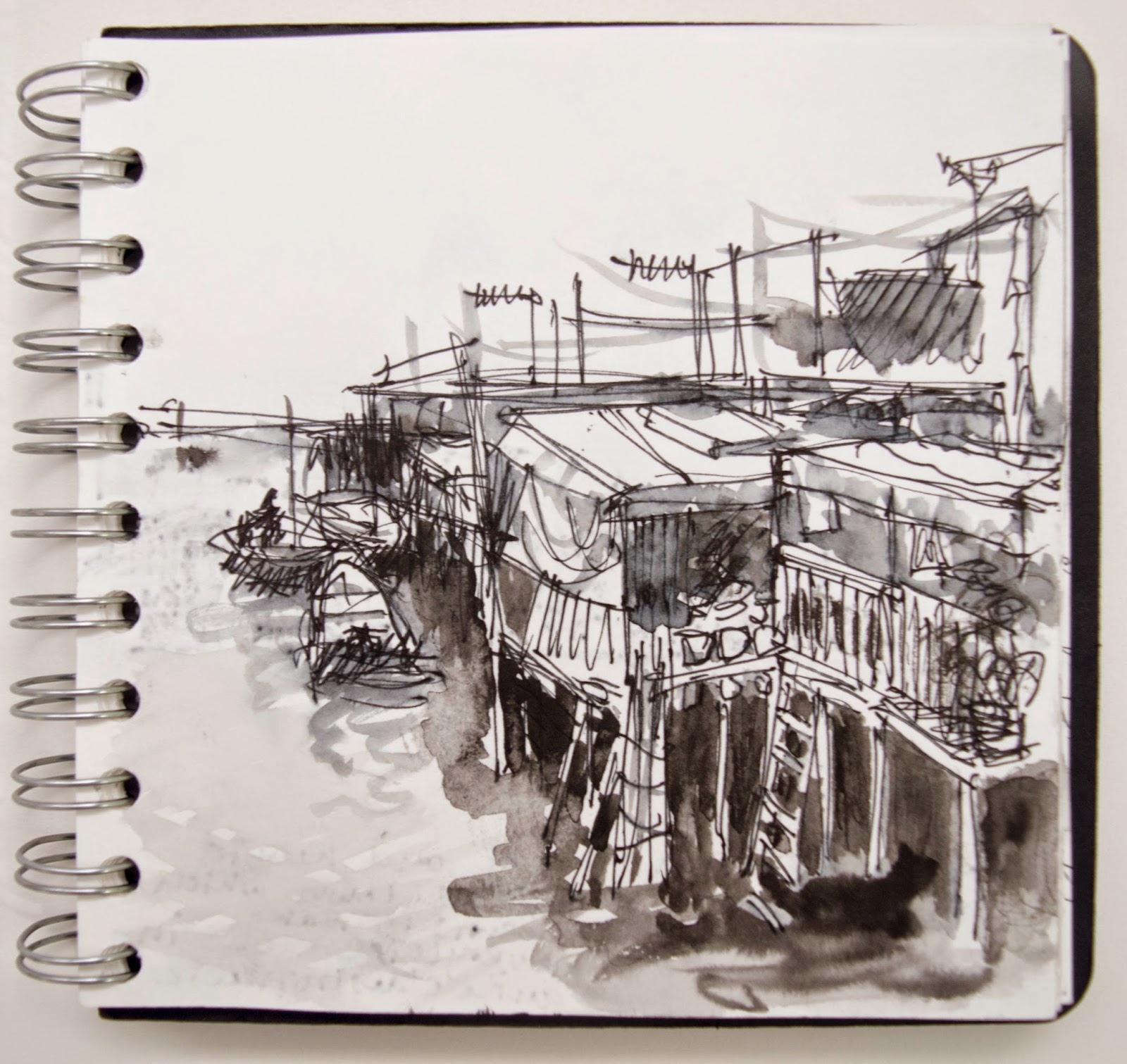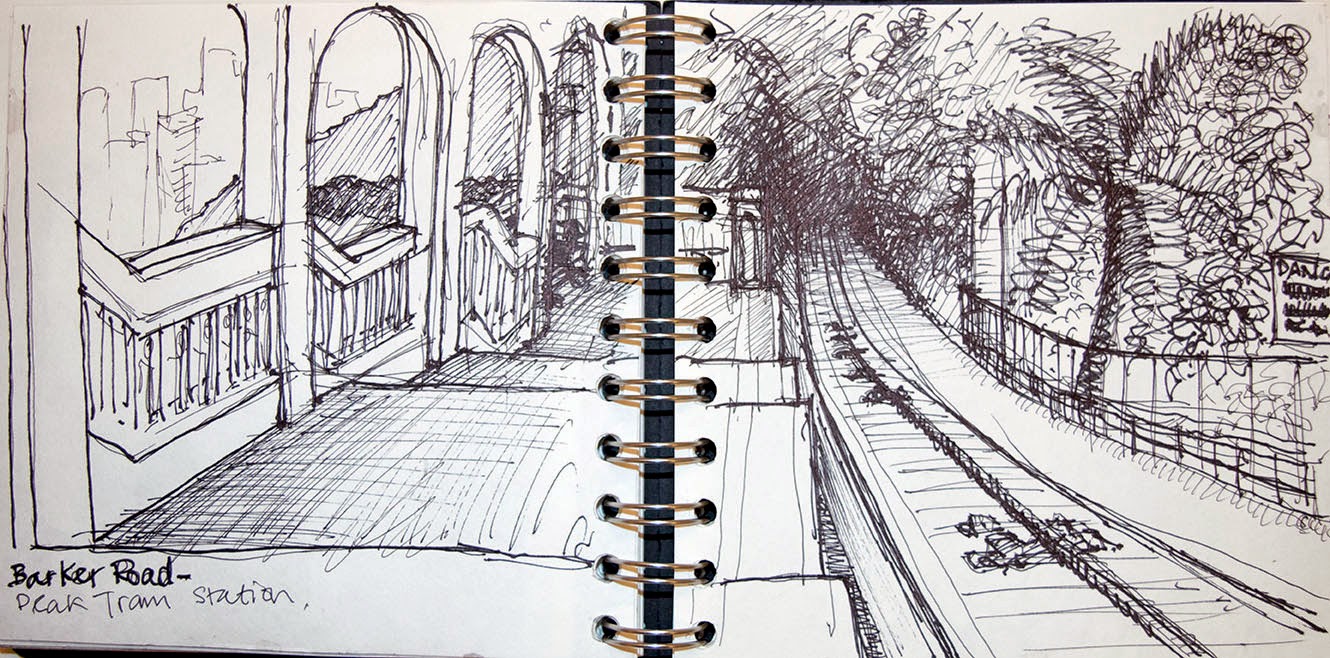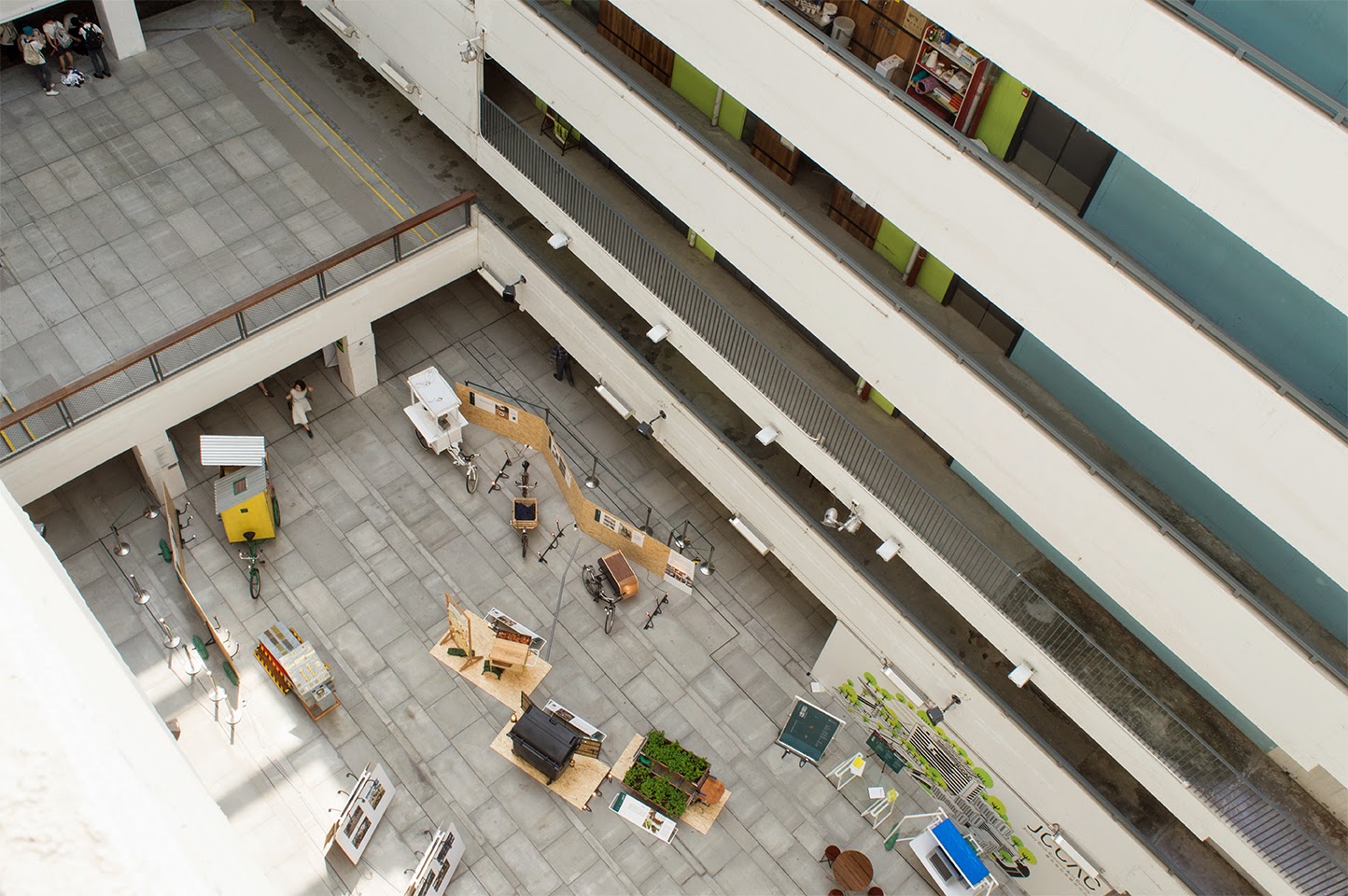(Sunday, 24 April)
 |
| Tai O - Stilt dwellings still inhabited by the local Tanka boat people |
I make the trip with Mian - it’s her only
day off and she wants to do something away from the frantic bustle of HK life.
I could do with getting out of the city too!
We take the ferry from pier 6 in Central;
it’s a pleasant forty minute trip which takes in great views of HK harbour and
its familiar skyline as it gradually retreats into the smog haze. This is also
one of the busiest shipping lanes, and the views are interrupted by the to and
fro of countless freighters and cargo vessels, sometimes less than a few
hundred feet away.
Once we reach Lantau’s ferry pier, Tai O is
reached by a half hour bus ride past some fabulous and mainly deserted beaches
(where are my swimming trunks?).
 |
| Shrimp paste drying in the sun. |
 We go on a “dolphin” cruise, ostensibly to
catch a glimpse of the Pearl River estuary ‘white’ dolphins (so say the posters
and tourist guides), which are in fact bubble-gum pink. Well I’d love to see a
pink dolphin as much as the next tourist, but sadly their numbers have declined
to such an extent (due to untreated sewage, boat pollution and net fishing)
that such sightings are rare these days. I’m afraid that the kids on the boat
are going to be disappointed. Mian explains to me that the boatman is saying to
them “don’t even blink, or you’ll miss them”. Flying pigs will also wing their way past the boat any second (thus speaks the age hardened cynic!).
We go on a “dolphin” cruise, ostensibly to
catch a glimpse of the Pearl River estuary ‘white’ dolphins (so say the posters
and tourist guides), which are in fact bubble-gum pink. Well I’d love to see a
pink dolphin as much as the next tourist, but sadly their numbers have declined
to such an extent (due to untreated sewage, boat pollution and net fishing)
that such sightings are rare these days. I’m afraid that the kids on the boat
are going to be disappointed. Mian explains to me that the boatman is saying to
them “don’t even blink, or you’ll miss them”. Flying pigs will also wing their way past the boat any second (thus speaks the age hardened cynic!). What you do see as you round the headland is the huge and all too real expansion, taking place to the north - the continuing airport development. Tai O looks very fragile indeed in the face of this.
It is nonetheless a great place to draw,
and perhaps its attraction is, like so much of what I’ve been attracted to in
HK, a bittersweet thing. Whether it can survive the juggernaut of expansion is
debatable. Last time I was in HK there was no MTR link to Lantau. Now it is no
longer an island. The MTR now extends by bridge to Tung Chong where a
cable car ride will take you to one of the largest statues of Buddha in the
world - a journey previously only possible by ferry and bus. Lantau is also
home to the HK international Airport and a Disneyworld theme park, all
connected by the MTR. It’s an easily commutable journey to Central HK, and
those who can afford it want to live here, away from the noise and claustrophobia
of the intense urban existence there; and the high-rises are going up, oh how
they are going up.
It’s probably safe to say that the extreme
west of the island is safe from building development, but its not safe from
being just something to be consumed by the visitors, captured on their cell phones
and shared on social media - and then forgotten. And it won’t be long before
some entrepreneurial son of a Tanka fisherman figures out that its easier to
set up a factory in China to dry and bottle shrimp paste than it is to spread it
out onto straw mats in the sun.






























